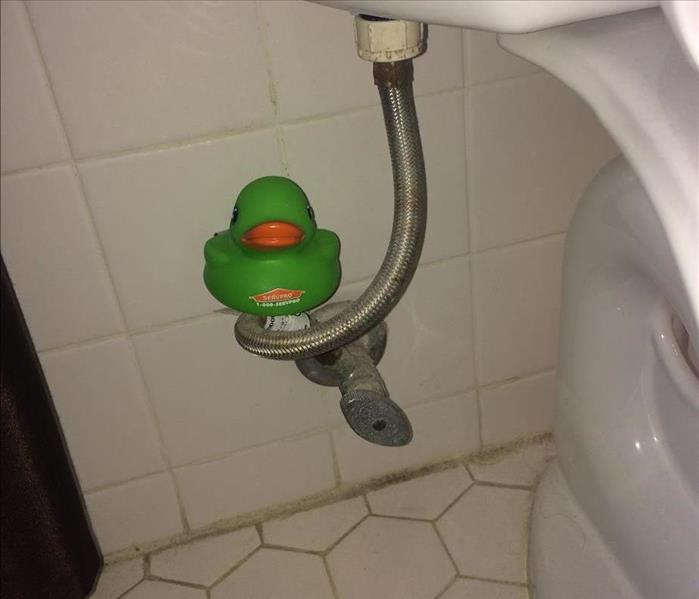Tips to Help Prevent Water Damage In Nassau/North Jax Homes
1/26/2018 (Permalink)
 Knowing where to locate shut-off valves can help to minimize water damages in the event of a plumbing or appliance failure.
Knowing where to locate shut-off valves can help to minimize water damages in the event of a plumbing or appliance failure.
Knowing common sources of water damage around your home can help you avoid big repair bills as well as time and trouble. Most floods and water damage are caused by plumbing and appliance failures. An example would be dishwashers, toilets, or washing machines that leak or overflow. The waste-filled, chemical-laden water, which may be either gray or black water can give rise to a toxic environment. In this case water removal is the number one priority. View the tips below for preventing water damage and knowing what to do if and when it occurs.
Toilets
- After flushing, remain in the bathroom until the fill valve has finished refilling the bowl.
- If the bowl or tank begins to overflow, turn off the water at the supply valve.
- Inspect the flushing mechanism inside the toilet every six months.
- The fill valve should shut off when the float reaches the proper water level.
- Operate the shut-off valve to make sure the water supply will turn off properly. Replace if needed.
Washing Machines
- Turn supply valves off when not in use for extended periods of time.
- Do not operate the washing machine while the home is unoccupied.
- Inspect the water supply lines every six months.
- Check the hoses for cracks, kinks, blisters, or scaling, all of which are commonly found near the hose connection.
- Replace washing machine hoses every 5 years or according to manufacturer’s instructions.
- Consider using reinforced braided stainless steel hoses
Water Heaters
- Have a professional inspection of the anode rod at least once every two years and annually once the warranty has expired. The rod may eventually corrode and leave the tank vulnerable to damage.
- Remove sediment by flushing the tank every six months. Sediment can build up faster in areas with hard water.
Refrigerator Icemakers
A refrigerator containing a water filtration system and ice maker may develop hose leaks from the water supply line. If these leaks remain unnoticed for extended periods of time, they can give rise to mold proliferation and damage to the walls, floors, and the foundation. If the refrigerator is leaking water, it could have a clogged or frozen defrost drain.
- Proper installation of the ice maker supply line hose is important to avoiding water damage.
- Ensure a tight connection between the hose and valve however, avoid over-tightening.
- If kinks are present, replace hose.
- Leave a 3 to 4 inch gap between the back of the refrigerator and the wall to prevent the hose from crimping.
- When pulling the refrigerator out for cleaning or service, avoid getting the hose caught beneath the wheels.
- Locate the water shut-off valve and check for leaks.
- Be sure water line fittings are secure.
Dishwashers
- Run the dishwasher after you get home and before you go to bed so you are able to shutoff the appliance at the first sign of trouble.
- When your unit floods, don’t panic. Instead, unplug the device or shut off the circuit breaker.
- Remove any debris from the drain gate; the drain gate is found on the bottom of the dishwasher.
- Inspect the drain and determine if it drains properly. If the water doesn’t drain, the hose that runs from the unit to the kitchen sink may need to be replaced or repaired.
If you have water damage problems or flooding, call SERVPRO of Fernandina Beach/Yulee at 904-729-2401. We’ll be there to help 24/7. For more information, visit:
Water Damage Restoration
Water Damage Tips
Water Damage Restoration Process
Storm Damage Restoration and Cleanup






 24/7 Emergency Service
24/7 Emergency Service